Amazon Echo vs. Echo Dot: Which smart speaker should you buy?
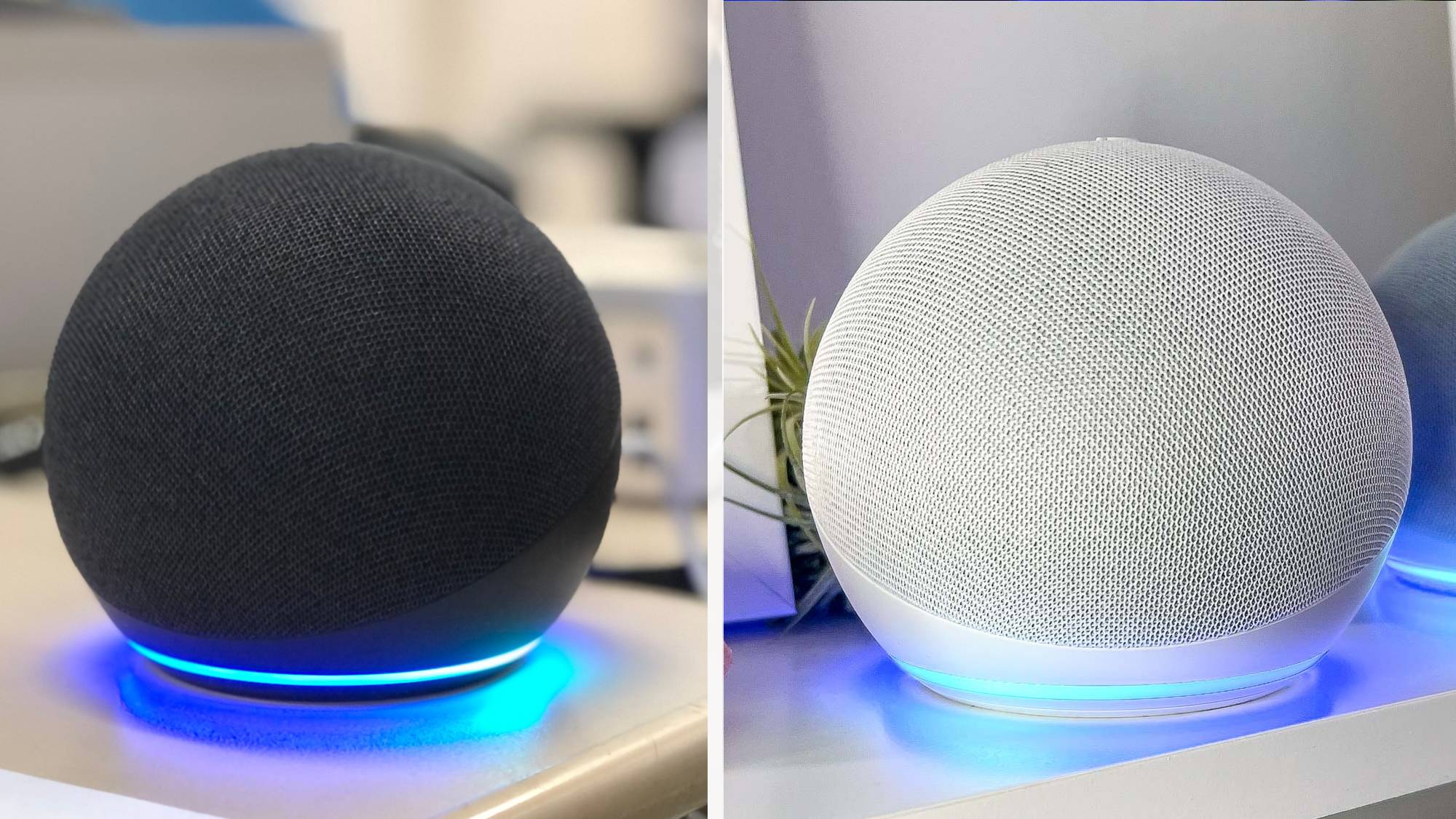
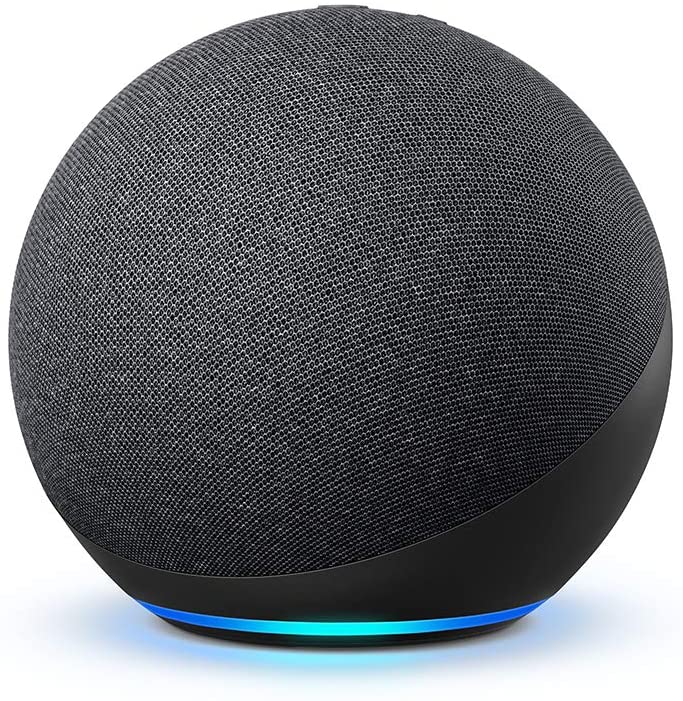
The 4th Generation Echo is the latest entry in Amazon's mid-range speaker lineup. Its sphere shape houses a large woofer and two powerful tweeters to wrap your room with crisp audio. It's the ideal smart home hub because it has built-in Matter and Zigbee radios to connect to devices both locally and over Wi-Fi.
Pros
- Sleek spherical design
- Good audio for price
- Built-in smart home hub
- Audio in/out port
Cons
- No text display
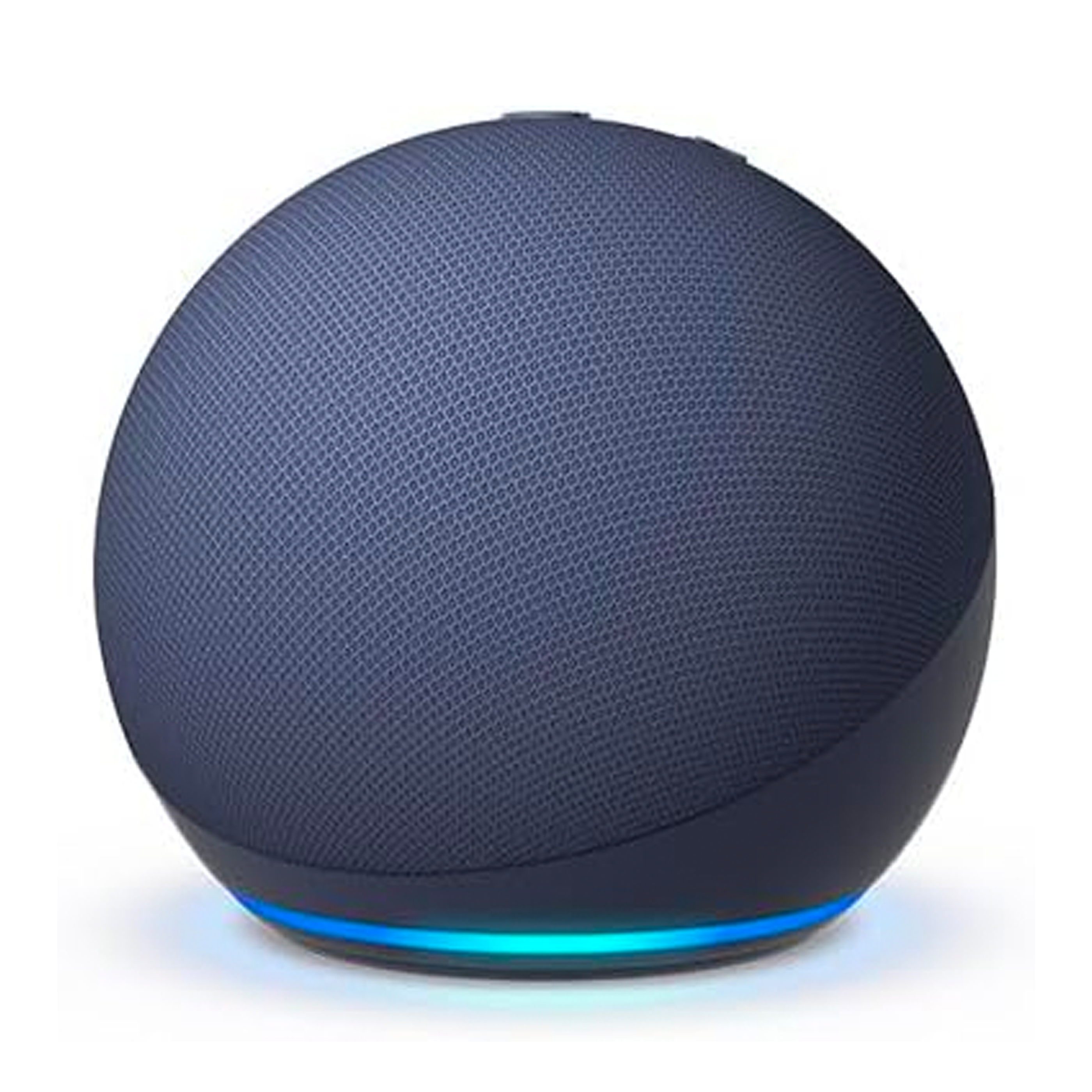
The Amazon Echo Dot (5th Gen) is one of the best smart home devices you can get for under $50. Not only is it a speaker, but it has a built-in motion sensor, temperature reader and eero extender, too.
Pros
- Strong sound for size
- Room temperature sensor for Alexa routines
- eero built-in
Cons
- No smart home hub
When choosing between the best smart speakers, you'll likely pit the Echo vs. Echo Dot. Both are among the best smart home devices you can buy for less than $100. Yet these sleek spheres fill the room with rich sound and offer a wealth of built-in smart home sensors. Hell, they even share the same design. However they have distinct differences that could make one better for you than the other.
The Amazon Echo (4th Gen) is the "big brother" of the two models. It's a mid-range speaker with sound that punches well above its weight. The sphere shape creates a wider soundstage that rings around the room. Meanwhile, a built-in Matter and Zigbee smart home hub will create the ultimate smart home experience. If you want to create a streamlined smart home, the Echo will lay down the foundation that fully connects all of your devices.
However, the newer Amazon Echo Dot compacts the Echo into a tinier sphere that delivers a similar experience at half the price. Of course, there are some trade-offs; it lacks a built-in smart hub and 3.5mm input. Still, it’s a convenient way to add Alexa to every corner of your home.
Here’s how the Echo vs. Echo Dot stack up in terms of price, design, and features so you can choose which is the best Alexa speaker for you.
Echo vs. Echo Dot: Specs compared
| Header Cell - Column 0 | Amazon Echo | Amazon Echo Dot |
|---|---|---|
| Price | $99 | $49 |
| Colors | Charcoal, Glacier White, Twilight Blue | Charcoal, Glacier White, Lavender Bloom, Midnight Tea |
| Size | 5.7 x 5.7 x 5.2” | 3.9 x 3.9 x 3.5” |
| Speaker | 3" woofer, two 0.8" tweeters | 1.73" front-firing speaker |
| Wi-Fi | 802.11a/b/g/n/ac (2.4 and 5 GHz) networks | 802.11a/b/g/n/ac (2.4 and 5 GHz) |
| Home sensors | Smart hub, motion, temperature | Motion, temperature |
Echo vs. Echo Dot: Price and availability
Both the Echo and Echo Dot are available on Amazon. The Echo costs $99.99 at full price, while the Echo Dot costs $49.99.
These speakers often go on sale, so be sure to check out the best Amazon deals happening now. Also see our guide on how to trade in Echo devices for Amazon gift cards you can put towards a new speaker.
Echo vs. Echo Dot: Design
The Echo and Echo Dot are round fabric-swathed speakers that share the same DNA. Both have four physical controls on top (volume up and down, mute, and action), with an Alexa status light that wraps around the bottom of the base.
Get instant access to breaking news, the hottest reviews, great deals and helpful tips.
Under the hood, it's a different story. The difference comes down to size, as the Echo's 5.7-inch body houses a more powerful 3-inch woofer and two 0.8-inch tweeters, in addition to smart home radios to act as a hub. On the other hand, the Echo Dot costs less with a single smaller 1.73-inch front-firing speaker, which makes it ideal for smaller spaces like bedrooms and offices.
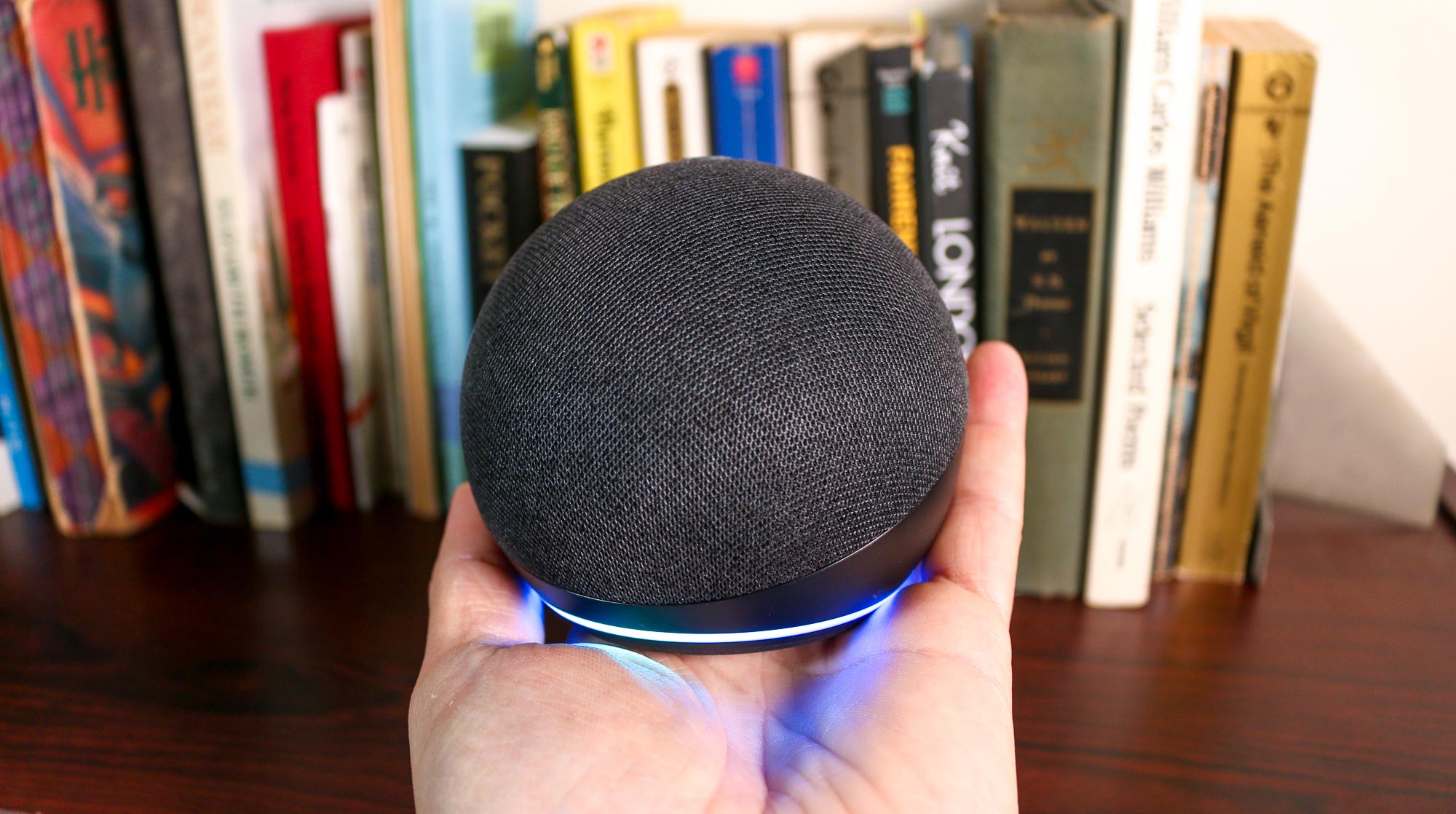
In terms of colors, the Echo Dot comes in Charcoal, Deep Sea Blue and Glacier White — all rather basic finishes. The Echo also comes in Charcoal and Glacier White options, but is also available in a light Twilight Blue color.
Echo vs. Echo Dot: Features
These two Amazon speakers are both voice controlled with Alexa. You can use the smart assistant to access the best Alexa skills, ask for information, control smart home devices, and place voice calls. Add some of the best Alexa compatible devices to your smart home setup and you can control the temperature or play content on your TVs completely hands-free.
Both Echos have built-in temperature and motion sensors that automatically trigger routines. For example, they can tell your smart lights to turn on when you enter a room or kick on an electric fireplace if a room gets too cold. And if your home is equipped with an Eero router you can use either Echo as a mesh Wi-Fi extender for up to 1,000 sq ft of Wi-Fi coverage and support for speeds up to 100 Mbps.
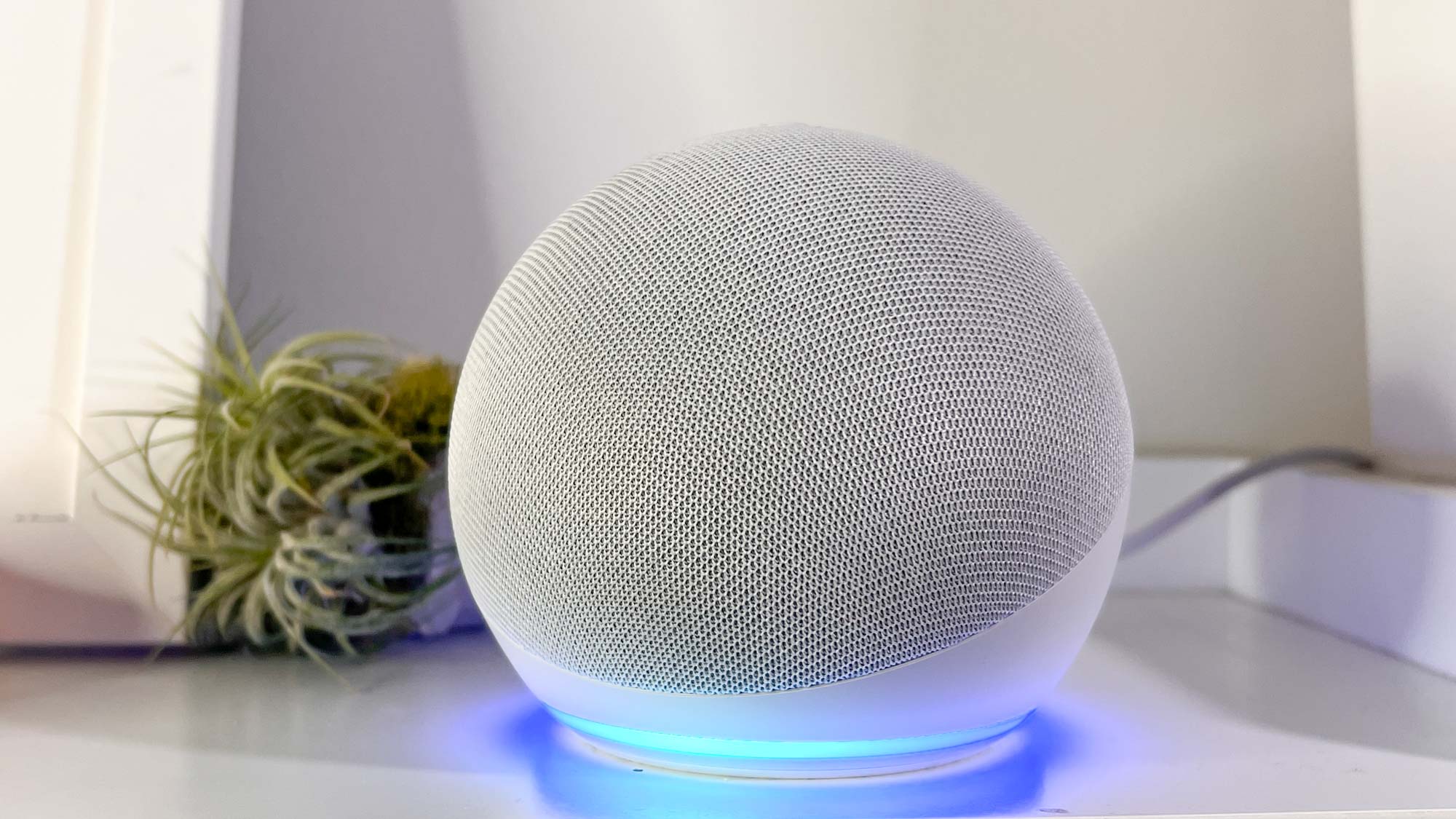
The Echo stands a cut above the Echo Dot feature-wise because it features the built-in smart home radios to connect Matter and Zigbee devices to your Alexa smart home. It can discover and pair gadgets in seconds. Regarding audio quality, the Echo has a larger speaker than the Echo Dot for stronger bass and a wider soundstage.
While the Echo is the speaker to buy if you want something that’s excellent for listening to music — the Sonos Era 300 is the best smart speaker for sound performance; however, it’ll cost you triple the price.
Echo vs. Echo Dot: Which should you buy?
Between the Echo vs. Echo Dot, the Echo has more to offer as a smart home device. The included smart home hub and significantly stronger audio performance makes it well worth the price. We think it’s one of the best smart home devices you can buy.
The Echo Dot is just as easy to recommend as the full-sized Echo because it's almost the exact same device shrunk down. It's especially difficult to tell the difference in smaller rooms at normal volume. If you want to add Alexa to a space and don't need the hub functionality or a speaker that gets super loud, the Dot is more than enough. In fact you can buy two Echo Dots for the price of one Echo. I just wish Amazon hadn't discontinued the excellent Echo Dot with Clock as this would've given it another leg up against the Echo.
Hunter Fenollol was a Senior Editor for Tom’s Guide. He specializes in smart home gadgets and appliances. Prior to joining the team, Hunter reviewed computers, wearables, and mixed reality gear for publications that include CNN Underscored, Popular Mechanics, and Laptop Magazine. When he’s not testing out the latest cooking gadgets, you can likely find him playing a round of golf or out with friends feeding his paycheck to a QuickHit slot machine.
Hunter started his career as an intern at Tom’s Guide back in 2019 while in college. He graduated from Long Island University Post with a degree in Communications and minor in Advertising. He has been vlogging ever since the iPhone 4 took front-facing cameras mainstream.

